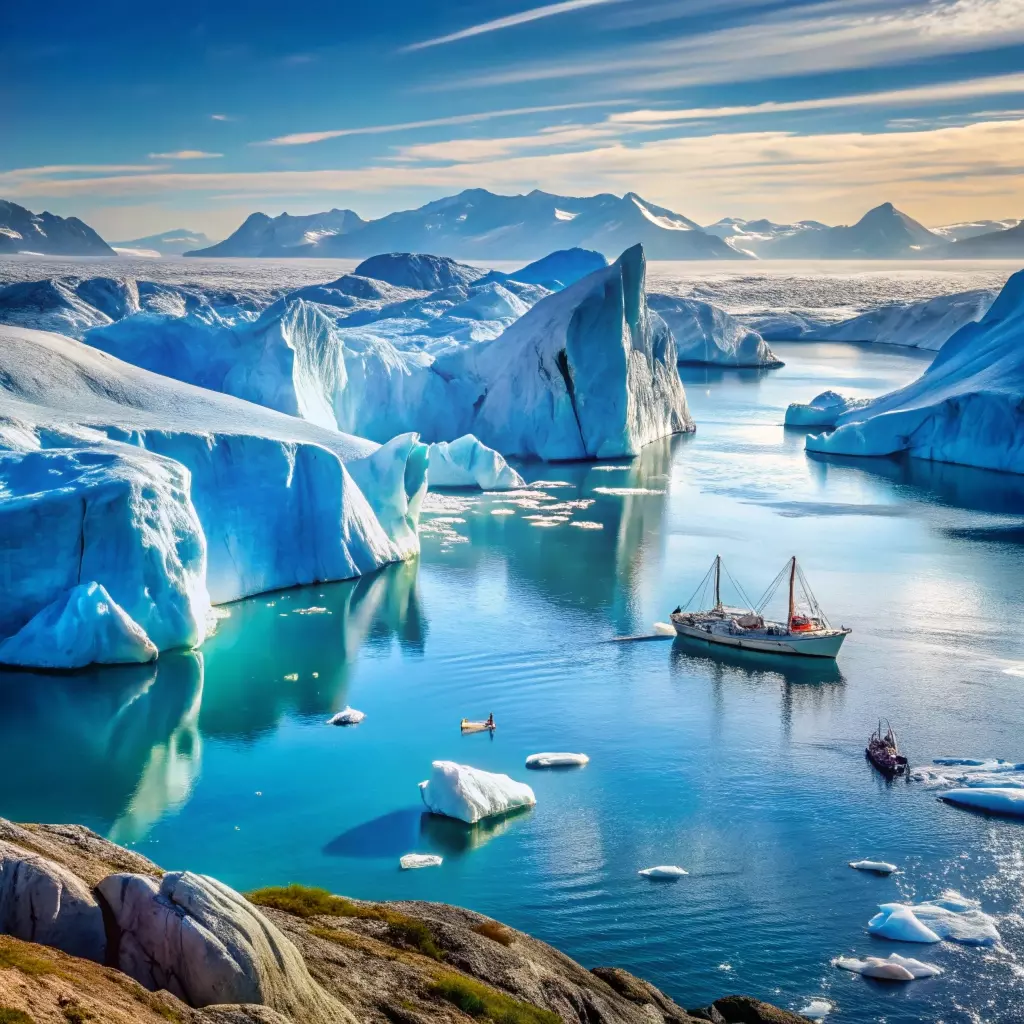As the world grapples with the escalating impacts of climate change, recent studies reveal alarming trends regarding the melting of Greenland’s glaciers. New research indicates that these glaciers are melting five times faster than they were two decades ago, a phenomenon attributed to rising global temperatures and changing oceanic conditions.
The Accelerating Melt Rate
According to scientists from the University of Copenhagen, the average annual decrease in glacier mass has surged from about 5-6 meters to approximately 25 meters over the last 20 years. This dramatic increase correlates strongly with a global temperature rise of nearly 1.2°C above pre-industrial levels, making 2023 likely the warmest year in 125,000 years. The Greenland ice sheet alone holds enough water to raise sea levels by at least 6 meters if it were to melt entirely, a scenario that is increasingly plausible given current trends.
New Research Findings
A comprehensive study published in Nature highlights that since 1985, Greenland’s ice sheet has lost around 5,091 square kilometers of ice, with calving—where ice breaks off at glacier termini—being a significant contributor to this loss. The study revealed that nearly every glacier in Greenland has experienced some level of retreat, exacerbated by warmer ocean waters that penetrate beneath the ice.
Further research from the University of Leeds indicates that over the past three decades, approximately 28,707 square kilometers of ice cover has vanished. In many areas previously covered by ice, vegetation is now taking root, suggesting a shift in ecosystem dynamics as barren rock and wetlands replace glacial landscapes.
Impacts on Sea Level Rise
The implications of these findings are profound. Between 2006 and 2018, the Greenland ice sheet contributed approximately 17.3% to global sea level rise. Current projections suggest that if melting continues at this accelerated pace, we may see significant increases in sea levels within decades.
Moreover, researchers have discovered that warming ocean waters are intruding into glacier grounding zones—areas where glaciers meet the sea—accelerating melting from below. A study from UC Irvine revealed that this intrusion could lead to even more severe predictions for future sea level rise than previously estimated.
The Role of Sediment Dynamics
Interestingly, recent explorations into the underwater environments beneath Greenland’s glaciers have unveiled complex sediment dynamics that may influence future melting rates. Researchers are investigating whether sediment buildup could act as a barrier to further glacier retreat. This ongoing research aims to provide insights into how these processes could potentially slow down catastrophic melting events.
Conclusion
The accelerated melting of Greenland’s glaciers is not just an environmental concern; it poses significant risks for coastal communities worldwide. Understanding these dynamics is crucial for developing strategies to mitigate climate change impacts and prepare for rising sea levels. As scientists continue to monitor these changes closely, the urgency for global action against climate change becomes ever more apparent.
Also Read: Mukhyamantri Majhi Ladki Bahin Yojana: A Catalyst For Women Empowerment In Maharashtra











